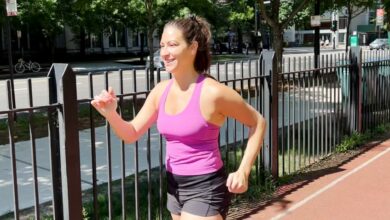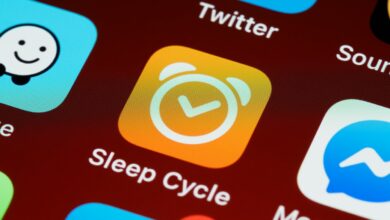It is amazing how much information you can get about someone’s personal life when you are their fitness instructor, I thought to myself as I stood in the studio preparing to teach a step class. Amid the usual background house music, I could hear women talking while arranging their steps on the studio floor.
“I managed to drop three sizes in the last four months,” said one of the women. “Now I just need to lose these last five kilos and I’ll be the happiest woman on the planet." After the usual compliments about her new figure, another woman noted, “These last couple of kilos are the hardest. I’ve been trying to lose six kilos for the last month, and I just get too frustrated. I get on the scale and find out that I gained weight!” She shook her head for a second and said, “I don’t know what to do, honestly.”
“Don’t get on the scale for a while,” I said, smiling. “You are developing your muscles while losing weight, and while muscles take up much less space in your anatomy than fat cells, they are heavier on the scale.”
The advice I usually give my clients when they hit a weight plateau (sometimes called a "fitness circle," a plateau occurs when a person gets stuck at a certain weight no matter how hard he or she exercises and diets) is to stop getting on the scale, instead measuring different body parts. Note measurements of the following areas: a circle around your body that crosses your navel, a circle crossing the highest point of your biceps, and a circle crossing the highest point of your thighs. By comparing these measurements weekly, you can better understand your progress.
“I lost five kilos a month for the last six months,” said a client. “Now I can’t even drop one kilo."
“That is an accomplishment, but it is, however, shocking for your body,” I told her. “A set of changes will hit your body after the loss of all these fat cells, and you need to allow your body the time to adapt to the new weight without trying to pressure yourself to lose more.”
It is extremely common for an overweight person to drop kilos fast in the first six months of training, and a plateau is usual after six months of working out.
Now that you are lighter, maybe your exercise and diet program need to be changed significantly; they were perfect for someone with your pre-exercise figure, but now you need to re-think your workout routine and make it more challenging. You also need to re-plan your diet and count a different set of calories per day.
“What can I do about it?!” a client in her thirties asked me. “I mean, I already eat healthy and exercise. What more can I do?”
I promised her a detailed conversation later, and while teaching the step class I thought about how to "break the circle."
You should start by working on maintaining weight, rather than losing more. The disappointment of not losing more weight could push you into falling off your fitness schedule and gaining the weight back, especially considering that the body considers fat cells to be an energy source and would like nothing more than to regain lost weight. Now that you are lighter, you should think of more challenging exercises; while biking in a city like Cairo might seem impossible, those living in a calm neighborhood should consider early morning bike rides. For cardio buffs, it might be time to try new instructors and classes like kick-boxing, stepping, and toning. Diet is another important factor in "breaking the circle," so you should try to eat even healthier and be slightly stricter about portion sizes.
Despite popular beliefs to the contrary, belly fat is the easiest to lose, and to gain. Unfortunately, there is no magic trick that will make the fat in your belly disappear forever. If you feel that the only place your body needs work is your belly, and after two or three months of exercising and painful ab curls you still can’t lose weight there, you should think of working out other areas of your body, ignoring the belly for a while. The body's natural need for energy when exercising will force that fat to vanish.




